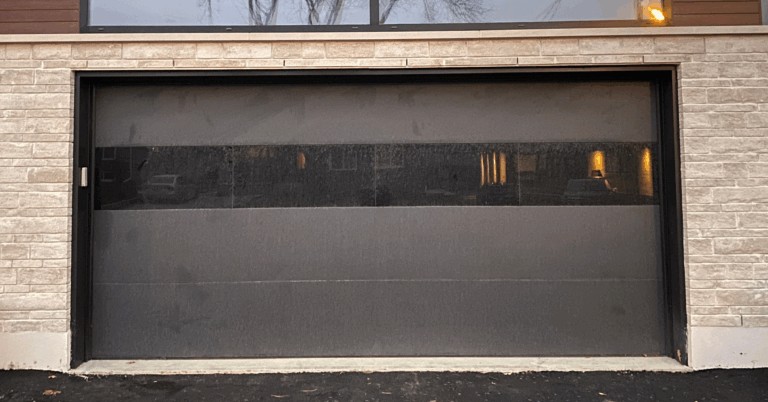Industrial Fan Singapore: A Complete Guide for Buyers
Introduction
In the thriving industrial landscape of Singapore, maintaining optimal air circulation and ventilation is crucial for safety, comfort, and productivity. Whether it’s a manufacturing plant, warehouse, workshop, or commercial kitchen, Industrial Fan Singapore play an indispensable role in controlling indoor climate, removing fumes, and enhancing airflow.
This comprehensive guide will help you understand everything you need to know about industrial fans in Singapore — from their types and applications to features, benefits, and how to choose the right one for your facility.
What Is an Industrial Fan?
An industrial fan is a high-capacity mechanical device used to move large volumes of air or gas within a facility. Unlike domestic fans, industrial models are designed for robust performance under continuous operation, often in harsh or high-temperature environments. Their primary functions include:
Ventilation: Removing stale air and bringing in fresh air.
Cooling: Lowering temperatures in hot environments or around machinery.
Air Circulation: Preventing the buildup of humidity or airborne pollutants.
Dust/Fume Extraction: Expelling harmful particles or gases.
Types of Industrial Fans Available in Singapore
There are several types of industrial fans available on the Singapore market, each serving different needs. Below are the most common types:
1. Axial Fans
Axial fans move air in a straight line, parallel to the shaft. They are commonly used for general ventilation, cooling large spaces, or removing smoke and fumes. These are ideal for:
Warehouses
Assembly lines
Agricultural storage areas
2. Centrifugal Fans
These fans work by drawing air into the center of the fan and releasing it at a 90-degree angle. They are suitable for high-pressure applications and are excellent at filtering or exhausting air from enclosed systems.
3. Blower Fans
Blower fans are engineered for focused airflow and are widely used in systems that require higher air pressure, such as HVAC units and air pollution control systems.
4. Wall-Mounted Fans
Wall-mounted fans help in saving floor space while still delivering powerful airflow. They are perfect for:
Industrial kitchens
Retail backrooms
Small workshops
5. Portable Industrial Fans
These fans offer mobility and flexibility, allowing users to move them around the facility based on need. They are widely used in construction sites, temporary warehouses, and event venues.
6. High Volume Low Speed (HVLS) Fans
These are large ceiling-mounted fans designed to move a high volume of air at a low rotational speed. They are ideal for regulating air temperature and improving energy efficiency in large spaces like factories and airports.
Key Benefits of Using Industrial Fans in Singapore
1. Improved Air Quality
With Singapore’s tropical climate and increasing industrialization, pollutants, heat, and humidity levels can be high. Industrial fans help reduce airborne contaminants, making workplaces safer.
2. Energy Efficiency
When used properly, industrial fans reduce the need for air conditioning by facilitating natural airflow, leading to significant energy savings.
3. Thermal Comfort
Fans help in maintaining a consistent temperature, preventing overheating of machinery and making the environment comfortable for workers.
4. Moisture and Mold Control
Humidity is a constant issue in Singapore. Industrial fans prevent condensation and the growth of mold, protecting products and infrastructure.
5. Worker Productivity and Safety
Proper ventilation reduces the risk of fatigue, heat stress, and respiratory issues, thereby enhancing productivity and safety on the job.
Applications of Industrial Fans
Industrial fans are used across multiple sectors in Singapore, including:
Manufacturing Plants: Cooling production lines and ventilating enclosed areas.
Construction Sites: Drying surfaces, clearing fumes, and maintaining safe air quality.
Agricultural Facilities: Controlling temperature in greenhouses or livestock barns.
Logistics and Warehousing: Regulating airflow to protect stored goods and improve worker comfort.
Commercial Kitchens: Removing heat and smoke to ensure hygiene and compliance.
Cleanrooms and Laboratories: Controlling particle levels and maintaining airflow standards.
Factors to Consider When Choosing an Industrial Fan in Singapore
1. Size and Airflow Requirements
Calculate the volume of the space where the fan will be installed. Airflow is measured in cubic feet per minute (CFM). A larger space or higher air change requirement will need a higher CFM rating.
2. Installation Type
Determine whether the fan will be mounted on the wall, ceiling, or be used portably. This depends on the facility layout and available space.
3. Environmental Conditions
If the fan will be exposed to corrosive chemicals, moisture, or extreme heat, choose one made from durable, rust-resistant materials like stainless steel or coated aluminum.
4. Noise Levels
Some industrial settings have strict noise-level requirements. Choose fans with sound-dampening features or opt for belt-driven models which tend to operate more quietly.
5. Energy Consumption
Energy-efficient fans not only save costs but are also more sustainable, aligning with Singapore’s green initiatives.
6. Safety Features
Look for fans that have protective grilles, thermal overload protection, and certification for industrial use to ensure operational safety.
Installation and Maintenance Tips
Installation:
Ensure fans are securely mounted according to manufacturer instructions.
Position them to maximize airflow without causing wind tunnels.
For HVLS fans, ensure adequate clearance and structural support from the ceiling.
Maintenance:
Regularly clean blades to prevent dust buildup.
Check motor function, especially in high-humidity environments.
Lubricate moving parts periodically.
Replace worn belts or damaged blades promptly.
Why Industrial Fans Are Essential in Singapore’s Climate
Singapore’s equatorial climate, marked by high humidity and year-round warmth, makes industrial fans a necessity rather than a luxury. Especially in non-air-conditioned facilities or open spaces, fans are a cost-effective way to:
Reduce heat buildup
Prevent stagnation
Improve overall working conditions
Moreover, with increased attention to workplace safety and sustainability, investing in reliable industrial fans contributes to a cleaner, more productive environment.
FAQs: Industrial Fans in Singapore
Q1: What is the difference between axial and centrifugal fans?
A: Axial fans move air parallel to the shaft, ideal for general ventilation. Centrifugal fans move air at a 90-degree angle and are suitable for high-pressure or ducted systems.
Q2: Are industrial fans noisy?
A: Noise levels depend on the fan type and design. Some models include features to reduce operational noise, such as aerodynamic blades and vibration-dampening mounts.
Q3: Can I use a regular fan in an industrial setting?
A: Domestic fans are not designed for heavy-duty use, extended operation, or harsh conditions. Industrial fans are specifically built for durability, efficiency, and higher airflow output.
Q4: How often should I maintain an industrial fan?
A: It is recommended to inspect and clean industrial fans every 3–6 months, depending on usage. Lubrication and part replacements should follow the manufacturer’s guidelines.
Q5: Can industrial fans help reduce energy bills?
A: Yes, by improving air circulation and reducing reliance on air-conditioning, industrial fans can significantly cut energy costs.
Q6: What materials are best for industrial fans in humid climates like Singapore?
A: Fans made from stainless steel or coated aluminum resist rust and corrosion, making them suitable for humid environments.
Q7: Are portable industrial fans effective?
A: Yes, they provide flexibility in targeting airflow and are ideal for temporary setups or variable operations.
Conclusion
Industrial fans are vital to maintaining safe, productive, and energy-efficient work environments across Singapore. With a wide range of options tailored to different applications and environments, choosing the right fan requires a careful assessment of your space, airflow needs, and operational demands.
Whether you’re managing a warehouse, factory, kitchen, or construction site, the right industrial fan will not only improve ventilation and comfort but also contribute to your facility’s long-term efficiency and compliance with workplace standards.







